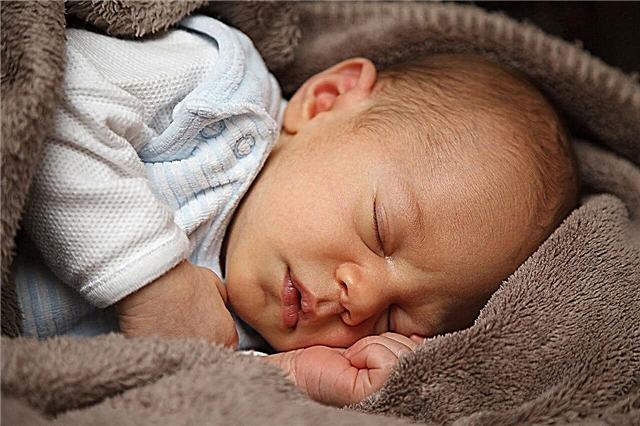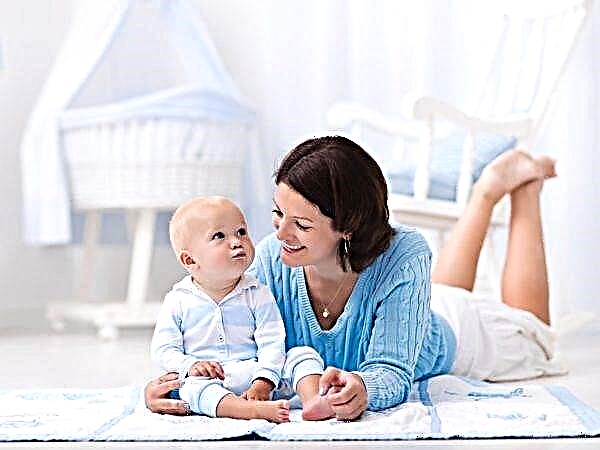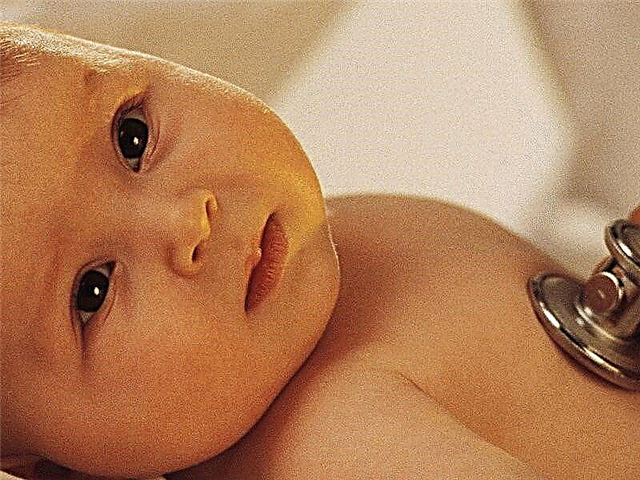The skin of a child is not always as beautiful as on a postcard. Rashes or other irregularities may appear on it. Often, parents ask themselves a question with regards to a rash in a baby: what could it be?

Rash in a child
In infants, it can be the norm, so parents need to be able to distinguish painful acne from quite ordinary ones, if there are any doubts, consult a doctor.
Causes of a rash in a child
A newborn rash on the body is an abnormal part of the skin or mucous membranes that stands out in color or texture. This is a collection of blisters, blisters, pimples that appear on a red background or at the site of an old rash. This criterion is important for the diagnosis.
A newborn baby may have small white dots on the face. You should not worry about this - in a few days there will be no trace of them.
What can be a rash in a baby? The skin of a newborn or baby is a very sensitive organ, so a baby's rash can appear in response to literally any exposure. In particular, the reasons for it may be as follows:
- Food allergy. If the baby is breastfeeding, there may be a reaction to the foods the mother is eating.
- Taking drugs intolerable to the body.
- Skin contact with irritant.
- Diaper dermatitis.
- Prickly heat.
- Hives.
- Neonatal variety.
- Infectious variety.
Only a doctor can correctly identify the source of the rash and give detailed explanations about how to treat a rash on the arms, cheeks or all over the body. To begin with, you can trace what affects the child to exclude an allergic, drug rash or contact dermatitis. The most dangerous option is an infectious one, which can manifest itself, including with deadly diseases.
Types of rashes in babies
Depending on the nature of the rash, it can be divided into many types. In general terms, the above classification is able to describe them, each item should be considered in more detail.
Neonatal rash in newborns
These physiological changes occur due to the adjustment of the hormonal background of the newborn. The body loses its ability to fight certain yeast fungi, which with normal immunity can normally exist on the human body. Hormonal neonatal rash occurs in the first weeks of life in 20-30% of children. This disease is not dangerous for the baby, does not need any kind of therapy.

Hormonal rash
Interesting. Such pimples almost do not fester, the pores are not clogged, in some cases they are not visible at all. The disease usually goes away on its own up to three months.
Allergic
There are several types of allergic rashes: food allergies, contact dermatitis, urticaria, and atopic dermatitis. The first and last forms are closest to allergies, while contact dermatitis and urticaria are reactions to adverse effects.
A food allergy is a rash that looks like a nettle burn. It is usually found on the cheeks and chin, and often peels off. It can also form on the legs, abdomen, back, and forearms. If the allergy is very severe, the rash in newborns can resemble scabs and get wet.

Food allergy
If the baby is breastfeeding, it is necessary to normalize the mother's nutrition: exclude red fish, whole milk, tomatoes, citrus fruits and a number of other products from the diet.
Food allergies can occur in response to early introduction of complementary foods. Therefore, it is necessary to try to give the baby new products gradually, start with one teaspoon, and, if everything is fine, after a week, give a full portion appropriate for age.
Formulas for artificial feeding can cause allergies on their own. They may contain proteins harmful to the child. The problem is corrected by changing the mixture.
Contact dermatitis is small pimples or changes that resemble chapped skin. Very often arise in response to the touch of a child's skin on clothes washed in perfume-rich detergents. It is also not recommended to dress the child with wool and synthetic materials.
Urticaria is a rash that looks like a burn, the causes of which are different, ranging from allergic reactions to the individual sensitivity of the child's skin to frost and heat. Hives can be caused by intense excitement.
Atopic dermatitis can occur for a variety of reasons, whether food-related or not. HFor example, common causes of atopic dermatitis are as follows:
- Dysbacteriosis.
- Hereditary predisposition.
- Using the wrong makeup.
- Violation of the rules of care.
If atopic dermatitis is suspected, it is necessary to consult a doctor who can establish a definitive diagnosis. To get rid of the symptoms, it is necessary to give the child antihistamines. Specialized medications can also clear up the rash.
Infectious rashes
Rashes can occur as a result of the harmful effects of microorganisms and viruses on the child's body.

Measles
In this case, you can get rid of the rash only with the help of a doctor. Diseases in which a rash of an infectious nature may appear:
- Roseola. It is triggered by herpes viruses of types 6 and 7. By its nature, it is a safe disease, the prognosis is favorable. Within a week, the symptoms disappear without a trace. As a rule, no treatment is required. If fever occurs, it is sufficient to use standard antipyretic drugs.
- Scarlet fever. It is a small scarlet rash on the face and neck of a baby, which first appears on the neck, back and chest, then spreads to the whole body. As a rule, the first symptom of the disease is a rash, but sometimes acne can appear the next day. After a while, the nasolabial triangle turns white, which is a characteristic sign of the disease. If antibiotics are used, the rash can heal quickly.
- Chicken pox. The rash also appears on the first or second day along with a high fever. A speck appears, which then turns into a bubble. After a while, it bursts, after which an abscess forms. Before the end of the disease, a crust appears. The duration of chickenpox is 3-5 days. Over time, the crusts fall off.
- Measles. First, the body temperature rises, rashes appear only after 3-5 days. They are very expressive in form: bright, large and multiple. It starts in the ear and spreads to the cheeks, arms, and the entire body. At this moment, it becomes clear that the child is on the mend. But lethal outcome is possible. If a high fever appears, you should immediately consult a doctor without waiting for a rash.
- Rubella. At first 3-4 days, the child has a fever in parallel with an increase in the occipital lymph nodes. The rash is smaller than measles, usually on the face, trunk, and limbs.
Improper care
Contact dermatitis, urticaria, prickly heat and diaper dermatitis can occur due to improper care.
Types of rashes
In appearance, a rash on the body of a newborn baby may be red spots or small rashes.
Red spots
There are many reasons for the appearance of red spots on a child's body. These can be both minor insect bites in their consequences, and serious infections. In general, red spots are rare.
Small rash
A small rash in a newborn can be presented as harmless pimples, which will quickly pass, or indicate a more serious illness. For example, a common cause of a minor rash is prickly heat due to hot weather or the presence of synthetic fabrics in clothing.

Rash on the skin of a baby
Often, small rashes can appear with an insect bite or touching a nettle.
Location of the rash
The location of the rash can indicate the cause. With contact dermatitis, a rash usually appears where an irritant touches the skin. With scarlet fever, the neck, chest and back are first covered, then it spreads to the whole body. A localized rash may indicate an insect bite.
On the body, face, neck, limbs
If it is seen that the rash in the baby appears in the head area, and then smoothly spreads throughout the body, this may indicate the presence of an infection. A small rash on the forehead of a child for up to a month may indicate a hormonal rash, there is nothing wrong with that.
Definition of the disease by localization of the rash
Despite the fact that the location of the rash may indicate their nature, only a doctor can fully establish the cause. The fact is that it is necessary to take into account other symptoms. For example, with measles, a child may sneeze, photophobia appears. You should not treat the child on your own, relying solely on the localization of neoplasms. Breast rash in babies can often be associated with clothing made from wool or synthetic materials. With measles, chickenpox, scarlet fever, it can sprinkle the whole body, including the legs.
Important! Examination of what the rash looks like is only a primary diagnosis. It is necessary to conduct a series of surveys to establish the exact cause. This can only be done by a doctor.
Getting rid of the rash
To get rid of the rash, you need to determine the cause. If it is an allergy, you need to see what makes it worse. Perhaps it would not hurt for mom to stick to a diet for a while, then carefully introduce different foods and look after the child.
Any rash that is accompanied by feeling unwell, flu-like symptoms (wheezing, coughing, fever) should be treated.
A rash on the face of a newborn (and anywhere else) may not pose a danger to the baby, but may pose a threat to his life. Therefore, at the slightest suspicion of an infectious disease or a strong allergy, the baby should be shown to the doctor.



